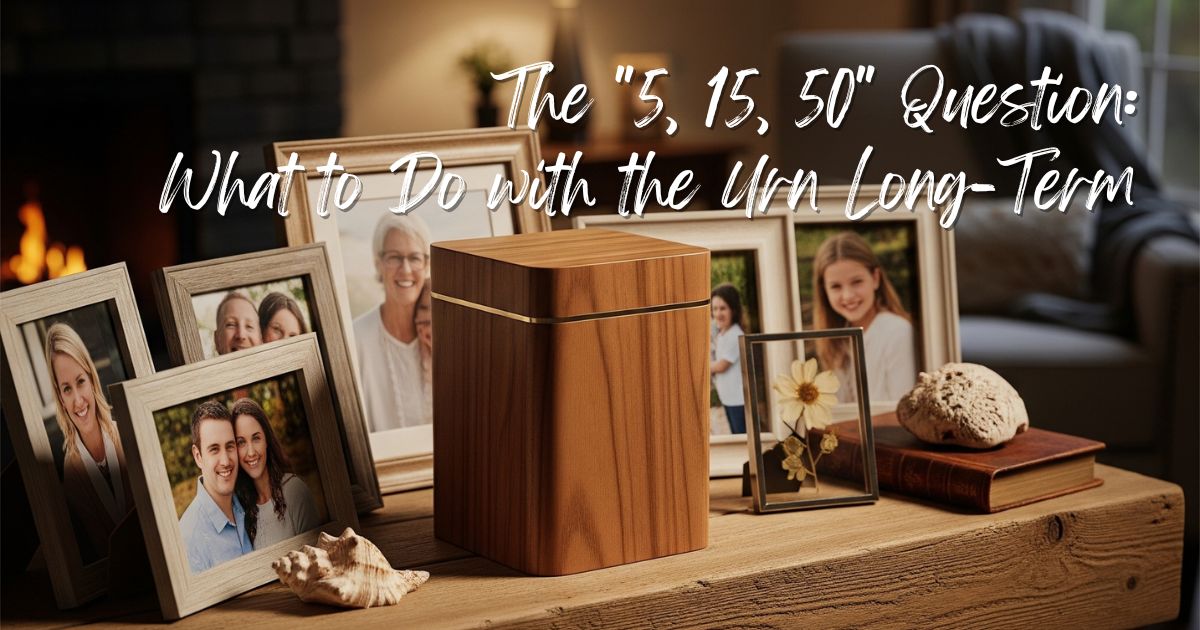
After cremation, many families initially keep their loved one's urn at home, finding comfort in its presence. But as years pass - whether five, fifteen, or fifty - important questions emerge about long-term plans for the urn and ashes. This decision evolves through different life stages, reflecting changing needs and the desire for a meaningful, lasting tribute.
The First Five Years: Comfort in Proximity
In the immediate years after loss, keeping the urn nearby serves an important emotional purpose. The physical presence provides a tangible connection during the grieving process. Many families place the urn in a special spot - a mantel, bookshelf, or memorial corner - where they can feel close to their loved one. This period allows time to process grief while postponing permanent decisions.
Fifteen Years Later: Practical Considerations Emerge
As life circumstances change, practical factors often come into play. Downsizing to a smaller home may make keeping the urn less feasible. Adult children starting their own families might want a central place for remembrance. Concerns about preserving the urn safely through future moves or generations may prompt families to consider more permanent options at this stage.
Fifty Years On: Creating a Lasting Legacy
After half a century, the focus shifts to legacy planning. Families often want to ensure future generations can easily connect with their ancestors. A permanent resting place in a cemetery or columbarium provides stability through generations. This decision also relieves descendants from having to make difficult choices about the remains later.
Three Meaningful Long-Term Options
When ready to make a permanent decision, families typically consider these thoughtful choices:
-
Columbarium Placement - These above-ground niches in memorial buildings offer a dignified, secure resting place that's easily accessible for visitation.
-
Cemetery Burial - Interring the urn in a family plot provides a traditional gravesite with a permanent marker for future generations to visit.
-
Nature Memorials - Scattering gardens or natural burial grounds allow ashes to return to the earth in beautiful, maintained settings.
The best decision balances emotional needs with practical considerations across generations. Many families find consulting with memorial professionals helpful when weighing options. Some choose to keep a small portion of ashes in a keepsake urn while placing the remainder in a permanent memorial. Others opt for creative alternatives like memorial reefs or incorporating ashes into glass art.
What matters most is selecting an option that continues to honor your loved one's memory meaningfully - whether that means keeping them close at hand or establishing a permanent place for future generations to remember. The "right" answer is the one that brings your family peace now and in the years to come.





